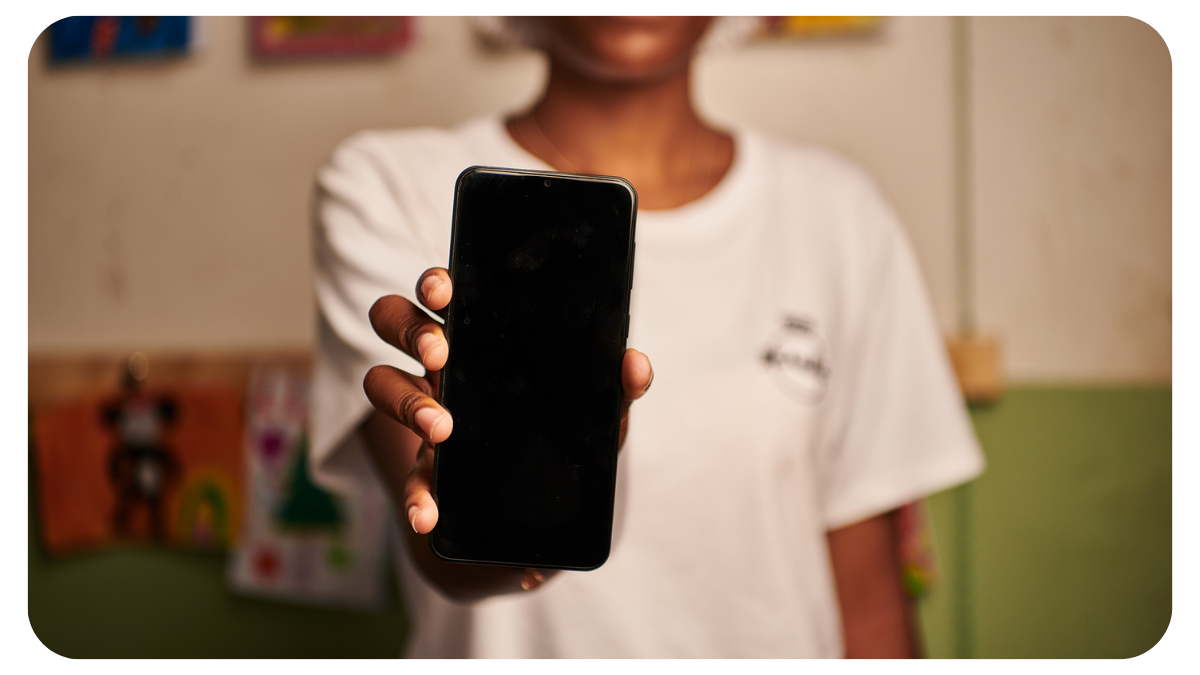
This post was written by Sonia Jorge, Executive Director, Alliance for Affordable Internet. Follow Sonia on Twitter @SoniaA4AI.
Christinah Ngoy is a facilitator at Timbuktu in the Valley, a skills development space for children living in some of Johannesburg’s most impoverished inner-city neighborhoods.
When she first joined the organization a few years ago, she supported the children who came for after-school care, helping them complete their homework and guiding them as they used the laptops donated to the center for access to online educational support and entertainment.
But when the pandemic hit, her role shifted.
Most children attending the center had no access to online schooling when classrooms shut down.
Christinah is a regular internet user herself—it was through internet research that she discovered the project and came to work here—and was familiar with inequalities in internet access around her in South Africa. And while she was happy to offer the children at the center a chance to engage with the digital world, watching how they responded to this transient access highlighted that the digital divide is about more than just about being online or offline.
“They are curious, but they are not as familiar with searching for things as other kids are. It takes them longer. They’re excited, but at some point they realize they can’t do this at home. It’s like a door opening on all this opportunity and then it gets shut again.”
We know that when the door to internet access opens, lives are transformed.
But the Covid-19 pandemic has crystalized that basic internet access is simply not enough. And the existing measure of internet access—online versus offline—greatly overestimates how many people across the globe are meaningfully connected. While 2 in 3 people worldwide are now considered to be online, billions lack the quality of access they need to fully engage in our digital world.
A binary way of thinking about internet access fails to take into account the substantial inequalities among those who are online, as Christinah discovered at the center.
Instead, we must think of connectivity like a ladder: basic access sits at the lowest rung, capturing the experience of those who may visit an internet cafe once every three months, for example, or the children who only have access to the internet when they visit the center.
As we move up the ladder, the quality of connection improves, until we reach the experience of those who use fast-fiber all day every day to conduct their lives.
The internet’s most powerful, and indeed most essential, features—streaming, video calling, education and health apps—are only available to those on the highest rungs of the ladder. To those with meaningful connectivity: regular access with fast speeds, enough data, and appropriate devices.
Meaningful connectivity offers tremendous benefits to those who have it, helping them climb to new heights like educational and vocational opportunities. But it remains beyond the reach of too many.
In short, digital deprivation is much worse than previously thought.
New research from the Alliance for Affordable Internet (A4AI) found a huge gap between the number of people with insufficient basic access and those with the meaningful connection they need to make the most of the internet.
Only around 1 of every 10 people across 9 low and middle income countries we studied have meaningful connectivity, compared to over 4 of every 10 people with basic access.
It’s important to remember that access is not an end in itself. It’s what people do with the connectivity that matters. And our research shows just how transformative a meaningful internet connection can be.
Users with meaningful connectivity were around a third more likely than users with basic access to do essential activities online like access healthcare, take a class, look for a job, or participate in the digital economy. They were 12 percent more likely to have posted something on social media, and 13 percent more likely to know the date of the next elections.
Meaningful connectivity changes people from consumers of information into full participants in our digital world. It can mean the difference between access to education, banking, healthcare—or none of them.
As more and more of our lives shift online, it’s critical that everyone has the quality of access they need to meaningfully engage in our digital world. The pandemic forced us to recognize once and for all that internet access is a basic right. As countries around the world begin to rebuild, it’s time to also recognize that quality of access matters. We can’t leave people at the bottom rung of the ladder—or indeed, off the ladder entirely.
Governments have an opportunity: they must raise the bar for internet access for everyone, or risk leaving billions of people out of the digital revolution and deepening existing inequalities. To aim for meaningful connectivity—to bring all citizens to the top rung of the ladder—means to enable more digital education and healthcare, power new businesses, and grow economies.
For Christinah, this is as urgent an issue as any other challenge facing children in her care. And she has seen glimpses of the potential that exists.
“Even in these short moments, I have seen kids become more confident, more independent. They are full of ideas. They want to make their lives better, and through the internet they are learning that there is a world to explore and be part of. I just want the door to the world to stay open for them.”
It’s time to open the door to meaningful connectivity—to opportunity—to everyone, everywhere.
Leave a Reply
